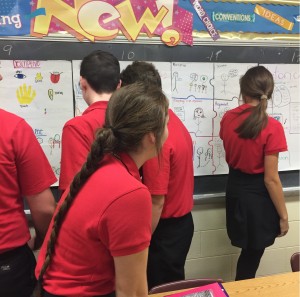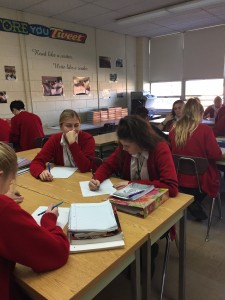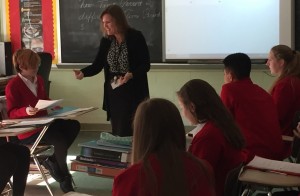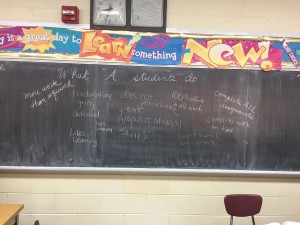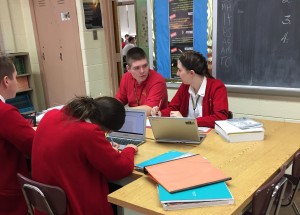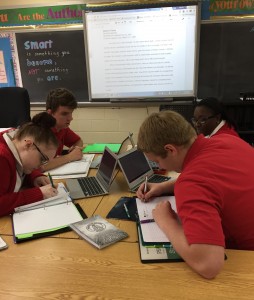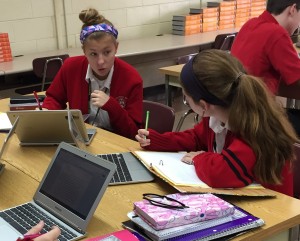 I have always been a voracious reader. Always. My earliest memories involve reading.
I have always been a voracious reader. Always. My earliest memories involve reading.
My advice to my students who desire to “get smarter” is to read everything they can get their hands on (broad), and when they find a writer they like, read everything that the author has written (deep).
As a teacher, I know that reading is the key to learning anything. Perhaps most importantly, developing a good reading habit will help students become good and great writers.
The skills you develop when you read deeply and broadly include learning how to better determine connotation and denotation of words, grammar usage, punctuation, writing moves, as well as learning about the content in your book, regardless of the genre.
My first love of reading was fueled by fiction. But over the last 20 years, I have learned to appreciate nonfiction on a much larger scale. However, during the school year, I rarely have the stamina to read an entire book. I spend much of my time reading student work, articles from the New York Times and Atlantic, blogs and posts and tweets and other information shared from colleagues and students and esteemed educators and leaders.
But when school winds down, and the summer begins, the books come out.
Here are books, in order, that I have read so far since school ended.
The Laws of Medicine: Field Notes from an Uncertain Science
The Gene: An Intimate History (still reading)
The Contact Paradox (hope to finish today)
But the books themselves are not as important as how I choose what to read.
Gifts: My daughter gave me Little Fires Everywhere as a Christmas gift. She chose it for me because it was something she was reading in her book club. Lest you think book clubs are for bored housewives, this daughter is a busy oncologist and mother of two.
Recommendations from people who are readers: I ask people what they are reading. If they are really excited about it, then I look into it. If it looks like something I might like, I read it. Educated was recommended by above daughter. It is also a book that is discussed in my AP English Facebook group as a good memoir for our course. It was in a pile of books my 81 year old mom (always a reader and a great role model)hopes to read this summer. I borrowed it and read it quickly. It is awesome.
Book Lists: I routinely check things like the New York Times Best Seller lists. I also look for posts when people talk about what they are reading for the summer–a frequent article on various sites and social media. This year I saw a list of what some UPenn people were reading. That made me curious about the books on genes. Krista (above daughter) said that she read The Emperor of All Maladies and loved it. That is a book on the history of cancer, her speciality, and she said, short of the difficult-to-pronounce names, that this book was interesting and engaging.
However, when I went to the library the first day it reopened (I only go to the food store and the library–you can see what I value) I found his other books. The one about Laws of Medicine was short and a quick read. I liked it because my best friend and daughter are both physicians, something that I had always wanted to be, and I like the discussion of medicine as an art or a practice or a science. The book on genes is extremely interesting and extremely long and I am progressing in reading it slowly.
I am a fast reader. Speed reading was part of our English courses in high school, and reading as much as I do, speed becomes second nature. However, some things need to be read s-l-o-w-l-y. That is another skill you learn from reading as much as you can. You learn to vary your reading speed according to the text and your purpose. Reading to enjoy? One can read quickly to keep the momentum going (or slowly to savor the prose). Science? Slow.
Library: When I located the two Mukherjee books, I looked through the stacks. First I went to fiction to find my FAVORITE fiction writer–Stephen King. I have read almost everything he has published. There I found a recently (2019) published book that I hadn’t yet read, and I snatched that up! Went to the Gs in the stacks, and found a Grisham book I hadn’t yet read. Grabbed that.
Then I went to the recent shelves–that special place where the librarians display new books. I found there the recent book on SETI–search for extraterrestrial intelligence. Would it to surprise you that there I was reminded of TWO things I can demonstrate to my new AP class–one is how Carl Sagan was aware of his audience, a senator who previously thought that any search like this was a waste of government, and developed a strategy of finding common ground so that he could change his opinion. And the other, making cross textual(curricular) connections. You would expect to talk about Darwin in a book about genetics, but in a book about outer space? Far out.
All in all, I haven’t spent a dime yet. It is not that I do not love to buy and cherish books. I do. When hubby and I downsized a few years ago, I had hundreds of books and nowhere for them in the new house. I brought them into school, and my students snapped them up! There are some books I will not part with. There are even some I will not loan. But most books are in a list I keep or in my memory.
Today is July 17. There are a number of books to be read yet. Some I can get at the library. Some I will borrow from a family member or friend. And some I will have to buy.
I can’t wait.




